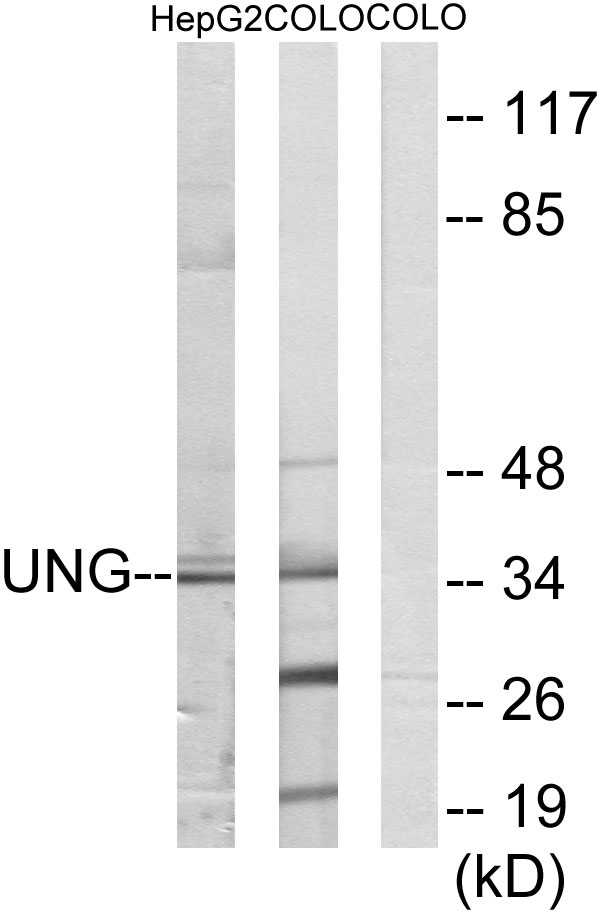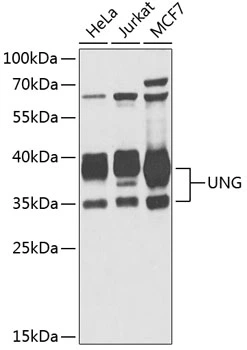UNG antibody
GTX113860
ApplicationsImmunoFluorescence, Western Blot, ImmunoCytoChemistry, Other Application
Product group Antibodies
ReactivityHuman
TargetUNG
Overview
- SupplierGeneTex
- Product NameUNG antibody
- Delivery Days Customer9
- Application Supplier NoteWB: 1:500-1:3000. ICC/IF: 1:100-1:1000. *Optimal dilutions/concentrations should be determined by the researcher.Not tested in other applications.
- ApplicationsImmunoFluorescence, Western Blot, ImmunoCytoChemistry, Other Application
- CertificationResearch Use Only
- ClonalityPolyclonal
- Concentration0.71 mg/ml
- ConjugateUnconjugated
- Gene ID7374
- Target nameUNG
- Target descriptionuracil DNA glycosylase
- Target synonymsDGU, HIGM4, HIGM5, UDG, UNG1, UNG15, UNG2, uracil-DNA glycosylase, uracil-DNA glycosylase 1, uracil-DNA glycosylase 2
- HostRabbit
- IsotypeIgG
- Protein IDP13051
- Protein NameUracil-DNA glycosylase
- Scientific DescriptionThis gene encodes one of several uracil-DNA glycosylases. One important function of uracil-DNA glycosylases is to prevent mutagenesis by eliminating uracil from DNA molecules by cleaving the N-glycosylic bond and initiating the base-excision repair (BER) pathway. Uracil bases occur from cytosine deamination or misincorporation of dUMP residues. Alternative promoter usage and splicing of this gene leads to two different isoforms: the mitochondrial UNG1 and the nuclear UNG2. [provided by RefSeq]
- ReactivityHuman
- Storage Instruction-20°C or -80°C,2°C to 8°C
- UNSPSC12352203
References
- Krieger KL, Gohlke JH, Lee KJ, et al. Repair-Assisted Damage Detection Reveals Biological Disparities in Prostate Cancer between African Americans and European Americans. Cancers (Basel). 2022,14(4). doi: 10.3390/cancers14041012Read this paper
- Rodríguez-Barrueco R, Latorre J, Devis-Jáuregui L, et al. A microRNA Cluster Controls Fat Cell Differentiation and Adipose Tissue Expansion By Regulating SNCG. Adv Sci (Weinh). 2022,9(4):e2104759. doi: 10.1002/advs.202104759Read this paper
- Martínez-Arribas B, Requena CE, Pérez-Moreno G, et al. DCTPP1 prevents a mutator phenotype through the modulation of dCTP, dTTP and dUTP pools. Cell Mol Life Sci. 2020,77(8):1645-1660. doi: 10.1007/s00018-019-03250-xRead this paper
- Chou WC, Hu LY, Hsiung CN, et al. Initiation of the ATM-Chk2 DNA damage response through the base excision repair pathway. Carcinogenesis. 2015,36(8):832-40. doi: 10.1093/carcin/bgv079Read this paper





